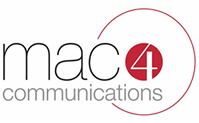First impressions matter. And when you’ve been invited to present to a crowd of leaders or peers trying to convey an important company message, strategy or initiative, they really matter. Your speaking “performance” is often judged within the first 30 seconds of your presentation, and your competency, knowledge and authority on the subject—well they are evaluated in less than a minute. Sounds intimidating? So what’s a presenter to do?
You might think these five reminders are “no-brainers” when it comes to presenting within your own organization, but so many presenters pay little attention to these must-dos.
1) Prepare well. Know your audience, know your subject and anticipate the questions your audience will ask in advance. Everyone focuses their time and energy on creating their slides; consider putting just as much energy into the talk track for the story you are telling.
2) “Tell” your story. Don’t distract your audience with cluttered, overly engineered graphics and wordy slides. Challenge yourself: if your slide deck contains 15 slides for a 30 minute presentation, consider cutting half of them. Spend more time telling the story with fewer slides. Help your audience focus on you and the story you are telling.
Keep it simple: simple slides, simple stories that are meaningful to your audience and a simple, dynamic presentation style that leaves your audience wanting to know more. Stories are told through examples. These are success stories, challenges overcome, opportunities taken or missed, pitfalls and disasters. Your audience wants to learn from your success, but they really want to avoid those epic fails—so air the dirty laundry. Remember, any speaker can relay the facts and details; great speakers tell the stories behind them.
3) Don’t underestimate the delivery: Let’s face it, your audience will never be as excited about your presentation as you are, so be dynamic, infuse humor (or at least periodic smiles; no one wants to be bored into submission by a monotone speaker who presents like they’d rather be somewhere else), let your audience relate to you (give them a reason to sit up, put away their phone or tablet and listen to you).
4) Dress up your slides. You wouldn’t think of wearing your tattered old sweatpants and a dirty t-shirt to make a presentation. Same thing goes for your slides. If you’re using the same old slides to make your point, and they appeared worn and antiquated last year when you presented them, it might be time for a refresh and a bit of spit and polish. Consider giving the slides you absolutely must have a design lift. Hire a design guru to refresh your slides, images and graphics; to embed new images where it makes sense and to ensure your slides meet your internal branding standards.
5) Invite interaction. Gone are the days where the presentation ends with a Q&A, and if time runs out —oh well. If you want an engaged audience, invite them to interject with questions as you tell your story (but be careful to stay on topic as you do so). Stop at key points during your story telling to ask your audience a question (consider polling your audience at the start and end of your presentation; be sure to share the immediate responses by incorporating feedback into your story). Be flexible, and don’t be afraid to go off script to address a key issue or question.
It’s really a no-brainer, when presenting to leaders and peers, “you only get one chance to make a first impression.”
Author: Danielle MacDonald

